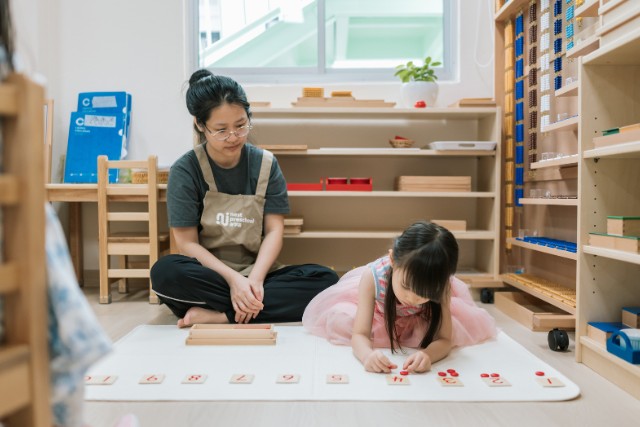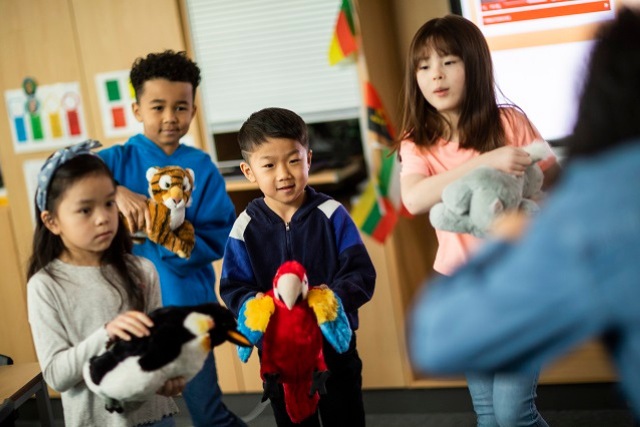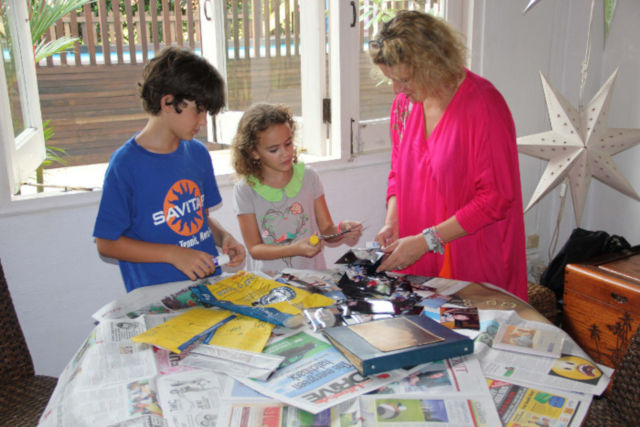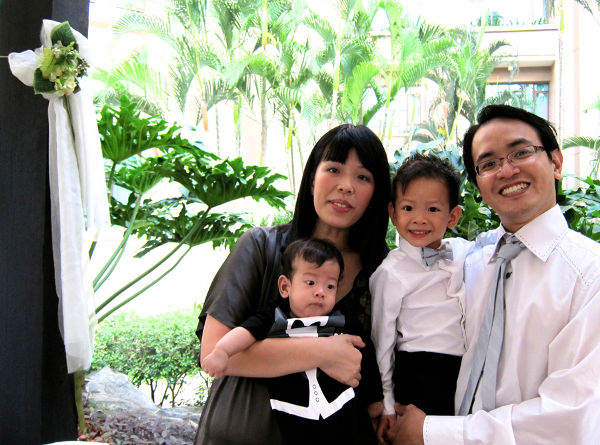If you observe your child at play, you will realise that every action that they do is a learning experience; an opportunity for you to start a conversation with them.
You can spark their interest by simply starting with the sharing of your childhood experiences. All of us have our own set of experiences.
There are no conversations too dull when we share our own stories with our children.
How To Get Your Child To Talk To You In 5 Steps

#1: Do not assume; talk about what you see
As adults, we tend to make assumptions about what children are doing based on what we see from our perspectives. Inaccurate assumptions will have a negative impact on children’s emotional aspect, causing them to lose their self-esteem.
While it is never easy to look at the same situation or object from different perspectives, we can talk about what we see instead. Talking about what we see encourages conversation as we appear interested in their work.
Instead of saying: “That is a nice cat, I like how its tail is drawn.
Say this: “I see that you drew a circle here, tell me more about your drawing.”
#2: Ask questions to know more
Ask questions to better understand what your child is thinking. A good mix of open and close-ended questions can help facilitate their thought processes and keeps the conversation going.
Open-ended question: “Tell me more about your drawing.”
Close-ended question: “Can you construct a car for me?”
#3: Steer Clear of Jargons
When conversing with your child, use child-friendly, simple words and avoid the use of jargons. When adults string a series of difficult words together, it makes it difficult for children to understand.
It will not be long before they become disinterested in the message because they have difficulties understanding the content of the conversation. However, it’s important not to ‘baby-talk’ to your child.
Instead of saying: “Let us use our sensory skills to explore the environment!”
Say this: “Let us look around, what do you see, smell and hear?”
#4: Transform the Negative to Positive
The selection of words we use affects our children behaviour. Words that are affirmative act as a model for children. It aids in reinforcing positive behaviours; encouraging children to focus on the positive. Before making a negative comment, think of how the negative words can be replaced with affirmative words.
Instead of saying: “Stop it, it is very rude of you to snatch.”
Say this: “Let us share the toys with your friends.”
#5: Use “we” messages instead of “you” messages
Your child will be more than excited when you want to join them in their play. Parents should keep in mind not to dominate their child’s play, and let children take the lead.
Using “we” instead of “you” makes them feel that you are participating in their play with them. The use of “we” messages also leads to connectedness; opening to more meaningful conversation opportunities.
Instead of saying: “You can build this.”
Say this: “We can build this together.”
There is no wrong question or time when it comes to talking with your child. You will be able to see that every conversation is a moment for you to understand your child.
To empower your child to thrive as a resilient individual, use words of encouragement when you talk with them. These words may seem unimportant but your language makes an impact.
By Cindy Peck Xin Ying, Lim Shi Rui and Lin Yanjiao.
This article was first published in The New Age Parents e-magazine.
* * * * *
Like what you see here? Get parenting tips and stories straight to your inbox! Join our mailing list here.
Want to be heard 👂 and seen 👀 by over 100,000 parents in Singapore? We can help! Leave your contact here and we’ll be in touch.



























































